It’s 9pm on one of Scotland’s smallest islands with limited supplies of people and goods available and we find the lighter for our cooker has run out of puff.
With raw fish and meat for tea, things were not looking good.
But then our survival instincts kicked in and my intrepid fellow travellers – Ruaridh, 15, and Flossie, 12, were dispatched into the dimming light in search of some matches.
Half an hour later, they returned, happy and fresh faced – but with no matches.
But not to worry, they had the next best thing, a mini blowtorch, which a very kind neighbour had dug out of her craft box and given to strangers with no more instructions than to “be careful’’.
Welcome to the Isle of Canna where, as DC MacPherson’s 1860s song so beautifully said: “The wind that comes from Canna, I feel it warm; I like to be looking in your direction; short is the time until I’ll be coming back to you.’’
And that’s just how we felt after exploring the westernmost of the small isles archipelago, in the Scottish Inner Hebrides. Linked to its neighbouring island (and our home for the three days) Sanday, by a road and sandbanks at low tide, it is 4.3 miles long and one mile wide.
With a population of just 17, you soon get to know the locals, and the welcoming party which greets you as the Calmac ferry pulls in reminds me of gentler times.
Despite our trip taking place in mid August, the weather wasn’t great, but it was fantastic to watch dolphins swim alongside the ferry as we made our way via Eigg and Rum.
Accommodation is limited on the island, with a campsite, guest house which caters for three adult-only couples, a bunkhouse and a trio of caravans, plus a 24-hour community shop complete with an honesty box.
We stayed in a well-perched caravan at Sanday, next to the currently redundant school and overlooking the water and rich birdlife. Everything from oyster catchers to Manx shearwaters, puffins and sea and golden eagles can be seen at various points of the island.
Steeped in history, Canna was bought by eminent Gaelic scholar John Lorne Campbell in 1938 and gifted to the National Trust for Scotland in 1981.
Campbell and his photographer wife Margaret Fay Shaw Campbell worked the island as a farm and nature reserve and built Canna House, which is currently undergoing extensive renovations.
The majestic house will be home to an enviable Gaelic collection, all lovingly cared for by archivist Fiona MacKenzie.
It was Fiona who came up with idea of creating 12 cleverly sculptured cats, which are dotted around the island and pay homage to John and Margaret’s love of the creatures.
For such a small island, there is plenty to do, with bird watching and walking a must, as well as a visit to the white remote beach of Sanday, which can be found just by a fisherman’s shrine and has spell-binding views out to sea.
In 1821, 436 people lived on Canna and Sanday, and within 40 years it had dropped to 127, many forced out through the clearances by the then island owner Donald McNeill.
You can see evidence of this and the remains of an early Christian cross, with two arms missing thanks to being used as a cannonball target in the Napoleonic wars.
Close by is a Punishment Stone, where locals tell offenders to place their thumb into a hole in the side and ponder on their bad deeds!
There are three churches, the Presbyterian Rhu Church known as the Rocket, used for weddings, the Catholic St Columba’s Chapel and the now abandoned St Edward’s Chapel.
Walking is a must, from shorter strolls which allow lovely views of the natural harbour, which attracts lots of yachts, to longer ones to see the Puffin Stacks and abandoned settlements of Tarbert, Garrisdale and Greod.
The island’s current National Trust ranger Catriona Patience gives guided walks around the island which is dominated by successive basalt lava flows which give the island its distinctive terraced topography and unusually fertile soil, utilised by Canna farm, home to 600 North County Cheviot ewes and 50 Aberdeen Angus, Shorthorn and pedigree Highland cattle.
At the hub of the island is the Café Canna, run by Gareth Cole and serving some wonderful dishes using locally sourced fish, seaweed and plant life.
Around 6,000 visitors come each year to Canna and forward-thinking locals work hard to create community projects to improve the island.
Current plans include providing three affordable energy-efficient houses, creating a new bunkhouse in an 18th Century barn, multi-purpose hub at the pier and a cultural venue. As the locals would say: draoidheachd ghlan – pure magic to you and me!
Travel facts
For more information on the Isle of Canna, accommodation and activities – www.theisleofcanna.com and www.visitscotland.com
Canna Café – www.cafecanna.co.uk
Ferry timetables – www.calmac.co.uk
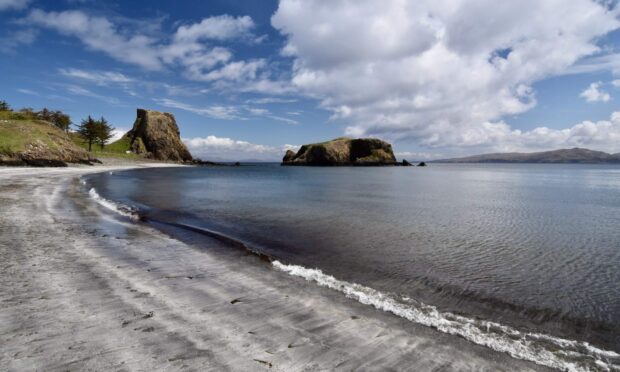
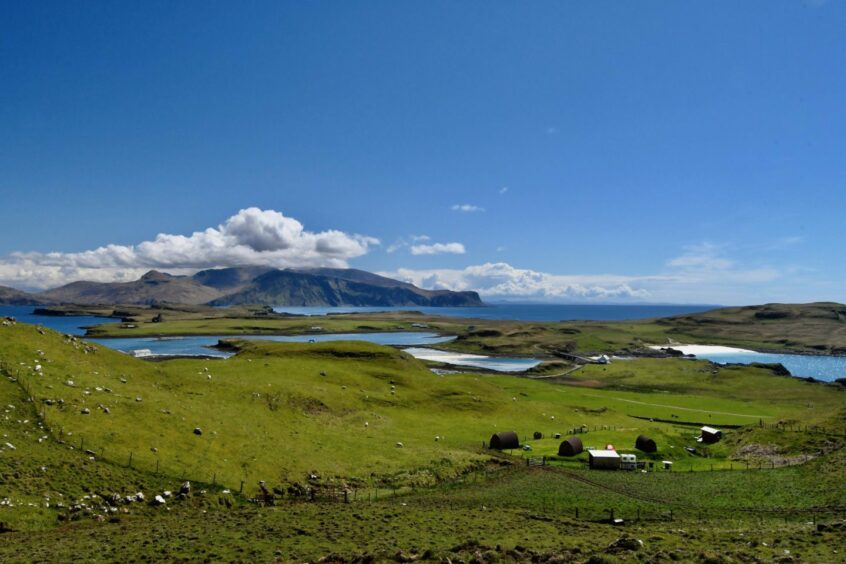
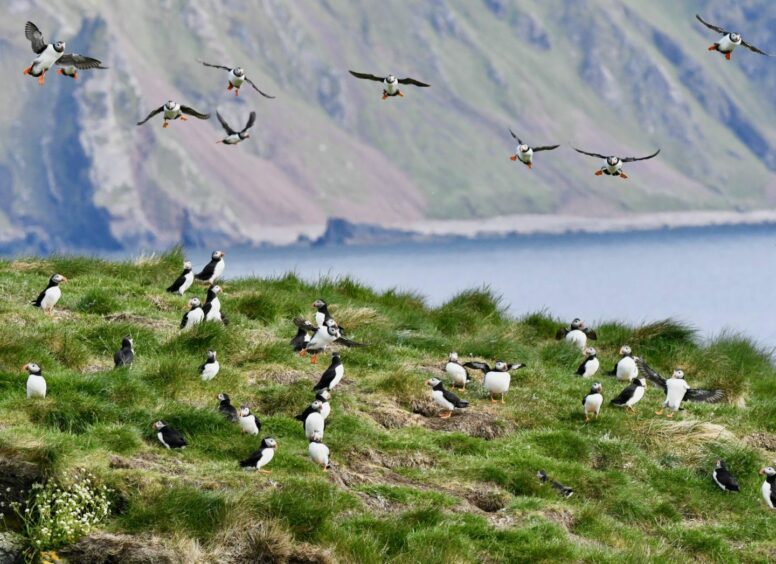
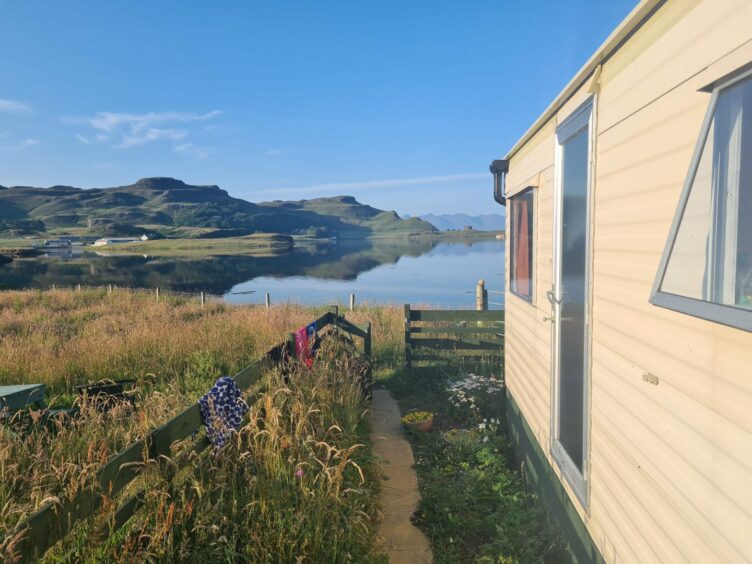

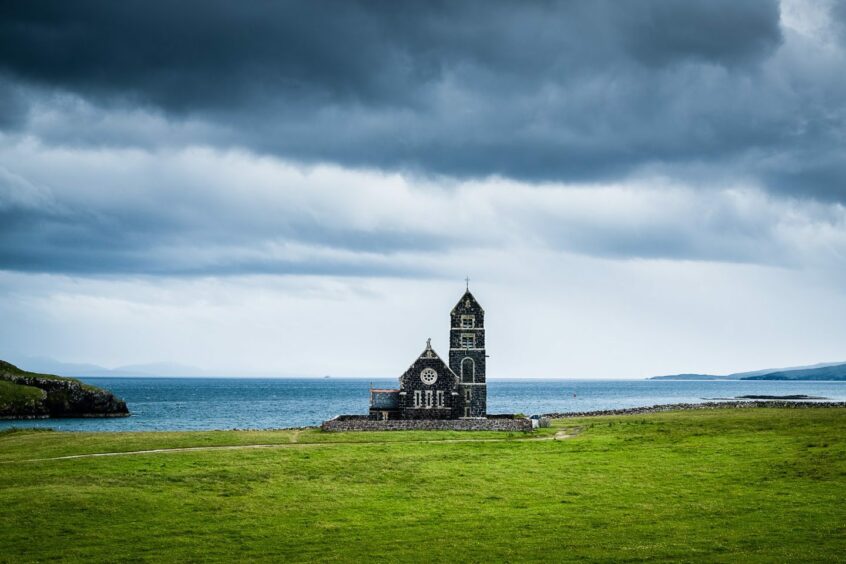

Conversation